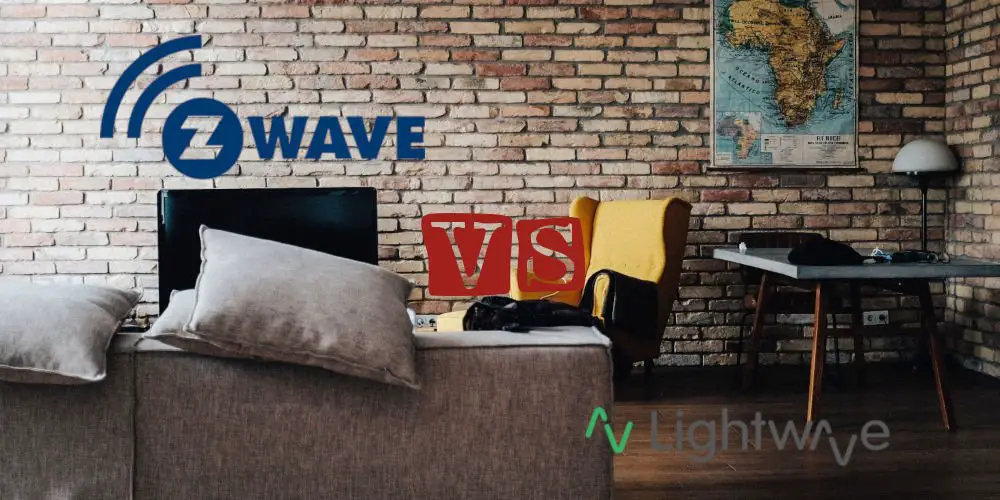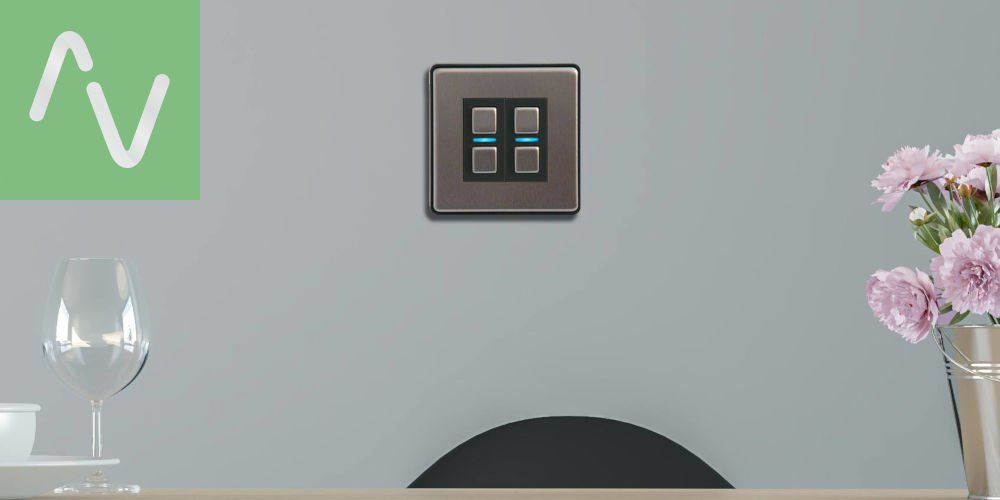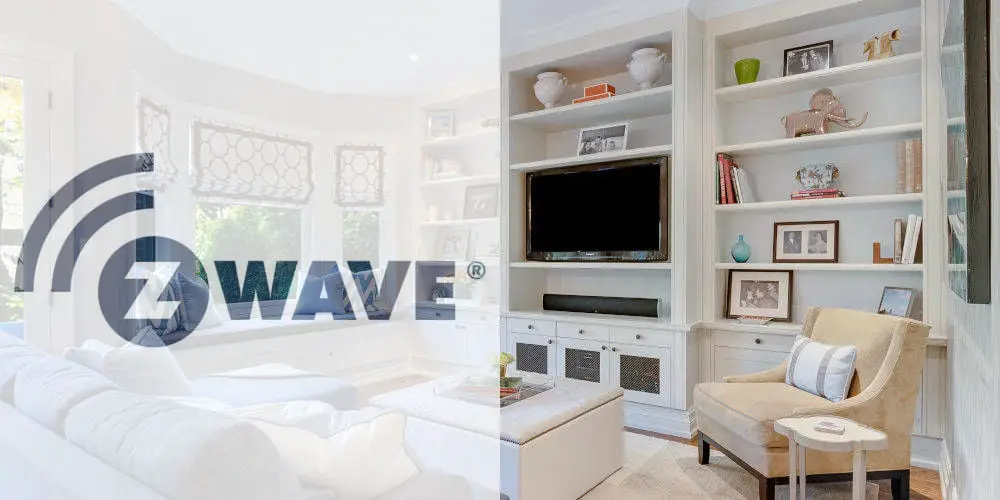Lightwave vs Z-Wave: Choosing a home automation system

Having covered both Lightwave and Z-Wave smart home systems in-depth and being complete home automation nerds, it’s worth figuring out which is better. It’s a simple case of Lightwave vs Z-Wave!
While both essentially offer the same options for home automation, they solve problems differently. Each system’s technology has its benefits as well as bad points, which makes it hard to compare them.
We’ll start with a brief history, then explore how each system works and some current products. Finally, we’ll try and answer if Lightwave or Z-Wave is better, once and for all!
Lightwave

photo by Lightwave
History
Since forming JSJS Designs in 2008, John Sinclair and John Shermer have transitioned from building home automation solutions for the disabled to releasing products for the general consumer market.
Before rebranding as Lightwave, they teamed up with B&Q to release the HomeEasy range. They also partnered with Siemens on a system that would become the basis for the first generation of LightwaveRF products. They’ve since dropped the RF and are simply known as Lightwave.
How Lightwave works
Lightwave uses wireless technology to enable users control a range of household devices. As wireless technology is widely used and highly affordable, it makes perfect sense to incorporate it into home automation products.
This simple, low-cost wireless technology transmits commands to individual Lightwave devices. While this method is more than sufficient for most applications, it does not have the advanced features of a mesh network technology such as Z-Wave. But more on that later.
However, Lightwave has tried to address this shortfall with 2-way communication in its second generation.
Is it DIY-friendly?
If you’re good at DIY, you’ll have virtually no installation costs as many products can be retrofitted or they work by plug-in-and-play. Many high-end home automation systems require one of their dealers to install the system, but not with Lightwave.
The power sockets and lighting switches are easy to install and come in several cool finishes. Once installed, pair devices with the hub and configure them in the app. These steps are really easy to do.
You can use Alexa and Google Assistant to control your smart home system, giving you greater flexibility.
Current products
The current range of Lightwave products includes power sockets (single and dual gang) and lighting switches (single, double, triple, quad) that work with a range of bulbs. They also sell TRV valve controls, a boiler switch and a thermostat that form a smart heating system.
Doorbells, several sensors, and relays are also available.
Downsides
Lightwave has a few limitations. They only manufacture devices that work in the UK. If you’re in the USA or EU, you’ll want to look at alternatives, such as Z-Wave or Zigbee.
As the first generation only used one-way communication, the hub has to tell each device what to do, which limits the range to 15 metres indoors. Thankfully, second generation devices use two-way communication, improving the range to 100 metres indoors.
Third, the Link Plus hub can only handle up to 100 devices. Some Z-Wave and Zigbee hubs can handle up to 230 devices. So, the Lightwave hub is fairly limited.
Next, you can pair each device with only 6 controllers or sensors. The device limit comes down to a lack of controller memory rather than the Lightwave technology.
Z-Wave

History
Dating way back to 2001, Z-Wave is approaching 20 years. Created by a Danish company named Zensys, the Z-Wave protocol is a unique way to control the home.
Zensys started building a lighting control using the protocol. Over the years they developed a proprietary chip that enables control via a Z-Wave system. Next, they started to license the chips to third-party manufacturers.
To put into perspective how impressive Z-Wave is. Only 6 products used this technology in 2005. Fast forward to 2018, and the number is well over 2000.
How Z-Wave works
The system uses a proprietary system on a chip (SoC), which uses an unlicensed frequency band in the 900 MHz range. The protocol has a much bigger range than Bluetooth and is a lower power alternative to Wi-Fi.
In simple terms, Z-Wave uses a mesh network where each device can talk to each other. As devices talk to each other, they can repeat messages and acknowledge they’ve received messages.
As devices have a 30-metre range, the network can adapt itself to ensure signals are routed in the best possible way to avoid any dead spots.
Is it DIY-friendly?
While some devices are easy to retrofit, most are plug-in-and-play, meaning anyone can easily install and configure a Z-Wave system. However, you need to pair devices to allow them to work as part of a system.
Current products
With over 2,000 products, there’s likely a device to control almost every function in your home and garden!
Some brands, for example, Fibaro offer a complete solution with a hub, app, sockets, and heating control. Read our comparison between Lightwave vs Fibaro.
There’s a range of controllable light bulbs, screw-in lighting, and dimmer sockets. Fibaro produces modules that sit behind the existing light switch in its backbox for a more seamless look.
Also, plug-in power sockets, sensors, relays and controllers are available. Yale even sells a Z-Wave door lock that uses both traditional keys and a keypad.
If you’re looking to control heating, several devices are available, including boiler switches, smart thermostats and smart TRVs.
You can even buy robotic vacuum cleaners and other smart appliances that work with Z-Wave!
Downsides
There are very few downsides. While only limited retrofittable products are available, the market does seem to be shifting in this direction.
In theory, the Z-Wave protocol ensures all devices with the chip play nicely with each other. However, some require a bit of TLC to get them working in harmony.

Lightwave vs Z-Wave
So that gives you an overview of each of the home automation systems. But which is better? Let’s compare Lightwave vs Z-Wave.
Lightwave
Starting with Lightwave, we like how simple it is to use. Several home automation starter kits are available, including one which uses a remote and plug-in power socket to enable basic control.
As a system, they have developed over the last few years with the introduction of the heating system and generation 2. The system now includes two-way communication and integrates with devices using IFTTT (If This Then That).
With all that said, it’s a closed system that is still quite basic and only available in the UK. So if you’re looking for a simple and affordable way to automate the bulk of your home, then Lightwave is the system for you.
Z-Wave
As an open system with over 2,500 products available, Z-Wave can be as simple or complex as you require. And with products available worldwide, regardless of your location, you can use Z-Wave in your home.
Z-Wave uses two-way communication that forms a mesh network, meaning the system’s operating range and control available is superior to Lightwave.
Many Z-Wave devices are plug-in-and-play, a factor we dislike purely from an aesthetic point. So Lightwave wins on this point.
Winner of Lightwave vs Z-Wave?
There’s no clear winner in Lightwave vs Z-Wave as they offer a different way of building a home automation system. That said, Z-Wave is an excellent alternative to Lightwave.
If you’re looking for a basic system that’s affordable and aesthetically pleasing, then go with Lightwave.
However, if you want a system that offers nearly limitless possibilities that can grow as you gain more confidence using home automation and has a wide product range, we advise choosing Z-Wave.
Hopefully, that answers your questions about Lightwave vs Z-Wave!




